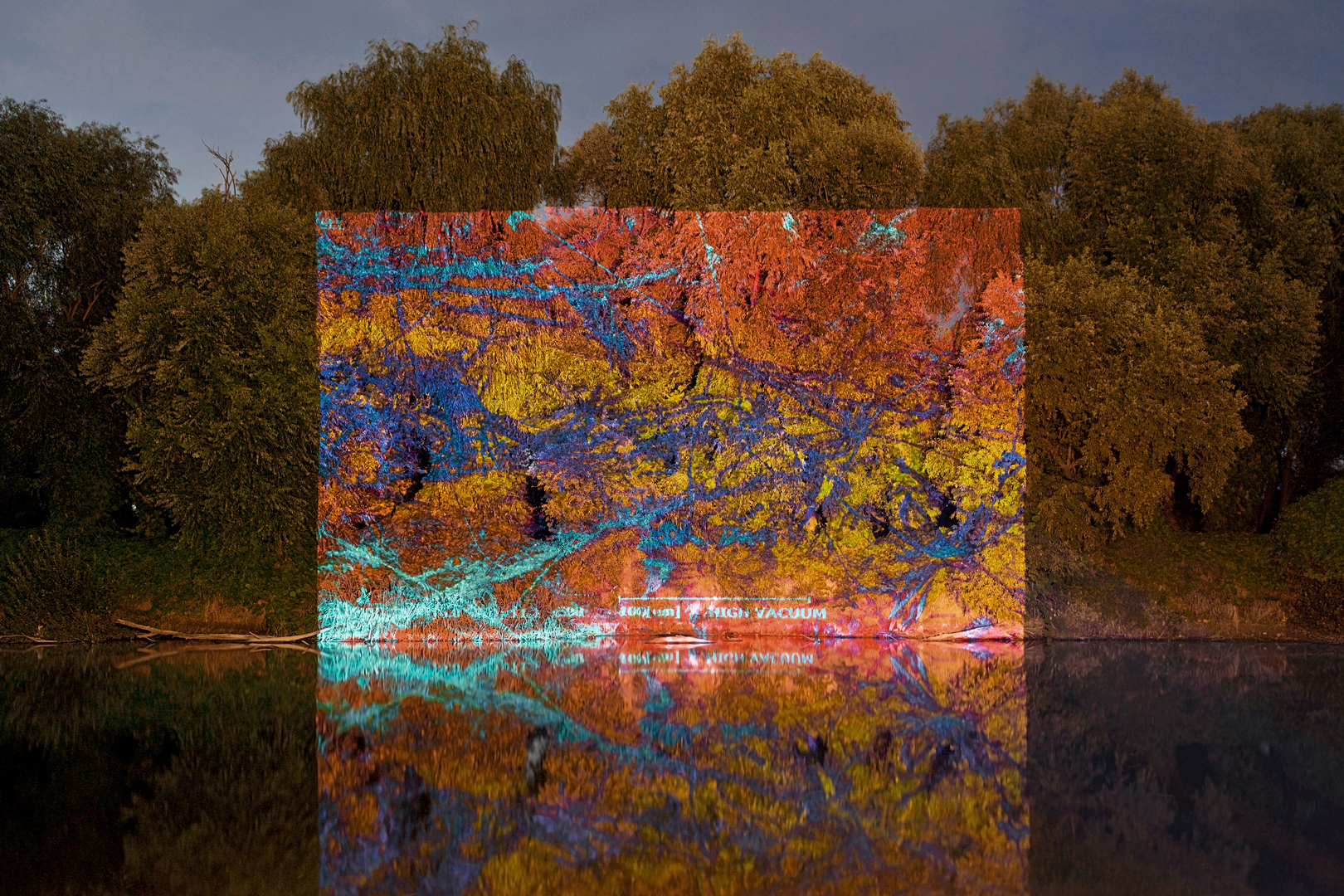Hojun Ji: Invisible Spot
Artist(s):
Title:
- Invisible Spot
Exhibition:
Category:
Artist Statement:
Summary
I observed old paper through a scanning electron microscope and discovered the natural shapes. This invisible nature was projected onto nature. With the help of an electron microscope, it was possible to express invisible nature and to provide differentiated visual insights through the grafting of science and art.
Abstract
The extension of Nanography to Cinematic Projection (various experiments based on the act of “seeing”) the works prove that the attempt to present a new perspective on the act of seeing are made in various stages. Major works are motivated by comparing the images of old and new Hanji (traditional Korean paper) taken by an electron microscope. In the image of the old Hanji, Mother Nature is engrained with the traces of time accumulated. The image resembles the scenery of mountain in that there are soil, trees grow, flowers bloom and fruits are born. With this motive, the background of this work turns to the nature. The photo works are harvested in the process of shooting all over the country by time and season. They highlight the contingency rather than intentionality and enhance fictitiousness by blurring the line between the actual forest and the virtual reality synthesized with a nano-image. Why don’t we imagine that the screen-like image in the wild nature is the screen of an outdoor theater? By stimulating the emotional code of a fictional drama, it spurs us to recall movies based on a specific situation. This work led to an opportunity for the artist to naturally develop the sense of improvisation and direction in the field and to integrate it into other cultural areas. My nano-image was projected behind a scene on a stage of a documentary film starring a pianist, as part of a theater stage set, on a small village in Jeju island, and on a house designed by H-Sang, Seung ‘s 18 years ago. The space of life and the space of fiction become more romantic because of the fictional clothes that are worn for a while. As the project progresses, the cultural sensitivity becomes more intense against the back drop of science.
Technical Information:
- Coxem’s scanning electron microscope (CX-200Plus) was used to observe and photograph at a magnification of 500 times to 50,000 times, making it suitable for photographing the subject’s nature with a high depth of field image.
- For the simultaneous expression of the two spaces, I produced a mobile system that was capable of projecting with its own power. By moving to a natural space in everyday life, an electron microscope image of old paper was projected onto nature and photographed.
Process Information:
It all began by observing old paper with a scanning electron microscope. A scanning electron microscope is a microscope that can observe the surface information of paper by hundreds to tens of thousands of times using electrons. Through this it is possible to accurately observe the natural appearance of the subject through high depth and high magnification images. For this observation, Coxem’s scanning electron microscope (CX-200Plus) was used to observe and photograph at a magnification of 500 times to 50,000 times, making it suitable for photographing the subject’s nature with a high depth of field image. The surface of the old paper observed through the electron microscope showed various sediments and microorganisms rather than the grain of the paper. This was similar to the nature that we often see. The time-provided nature such as the dirt, the trees growing, and the flowers blooming on the paper resembled the scenery in the mountains we commonly see. (Figure1). We wanted to present a new perspective on human’s viewing behavior by simultaneously expressing the invisible nature and nature in everyday life. For the simultaneous expression of the two spaces, we produced a mobile system that was capable of projecting with its own power. By moving to a natural space in everyday life, an electron microscope image of old paper was projected onto nature and photographed.. It is a new artistic expression technique that evolved by grafting the micro world into the dépaysement technique of the surrealist painter Rene Magritte, which creates a strange and unfamiliar scene by removing a specific object from the context of common sense and placing it in a disparate situation, thereby shocking the viewer.





